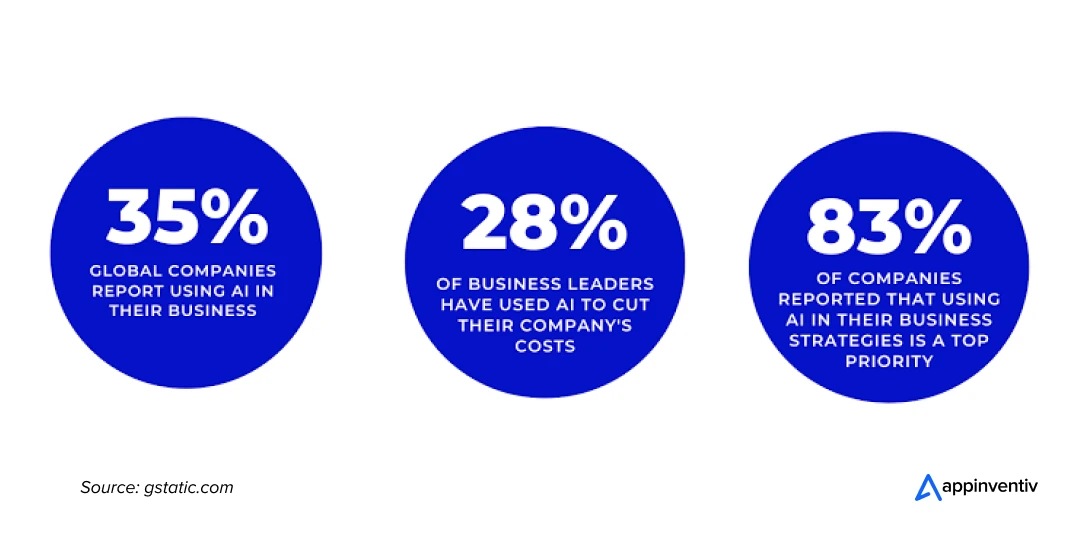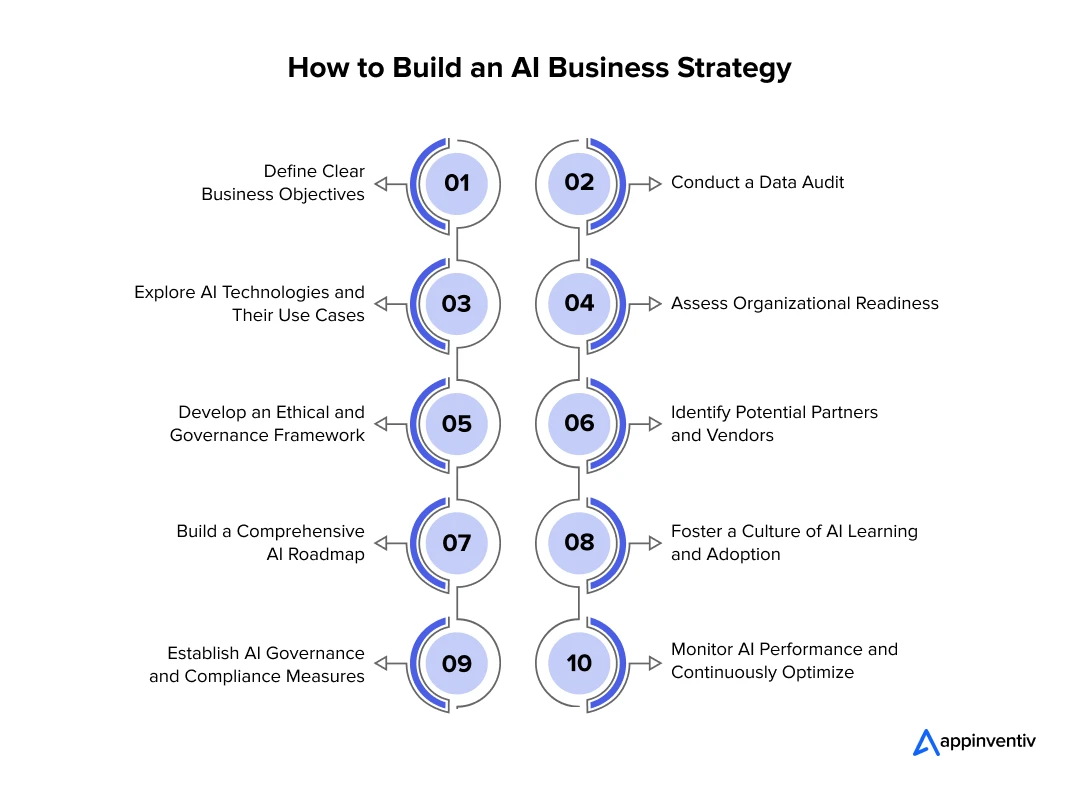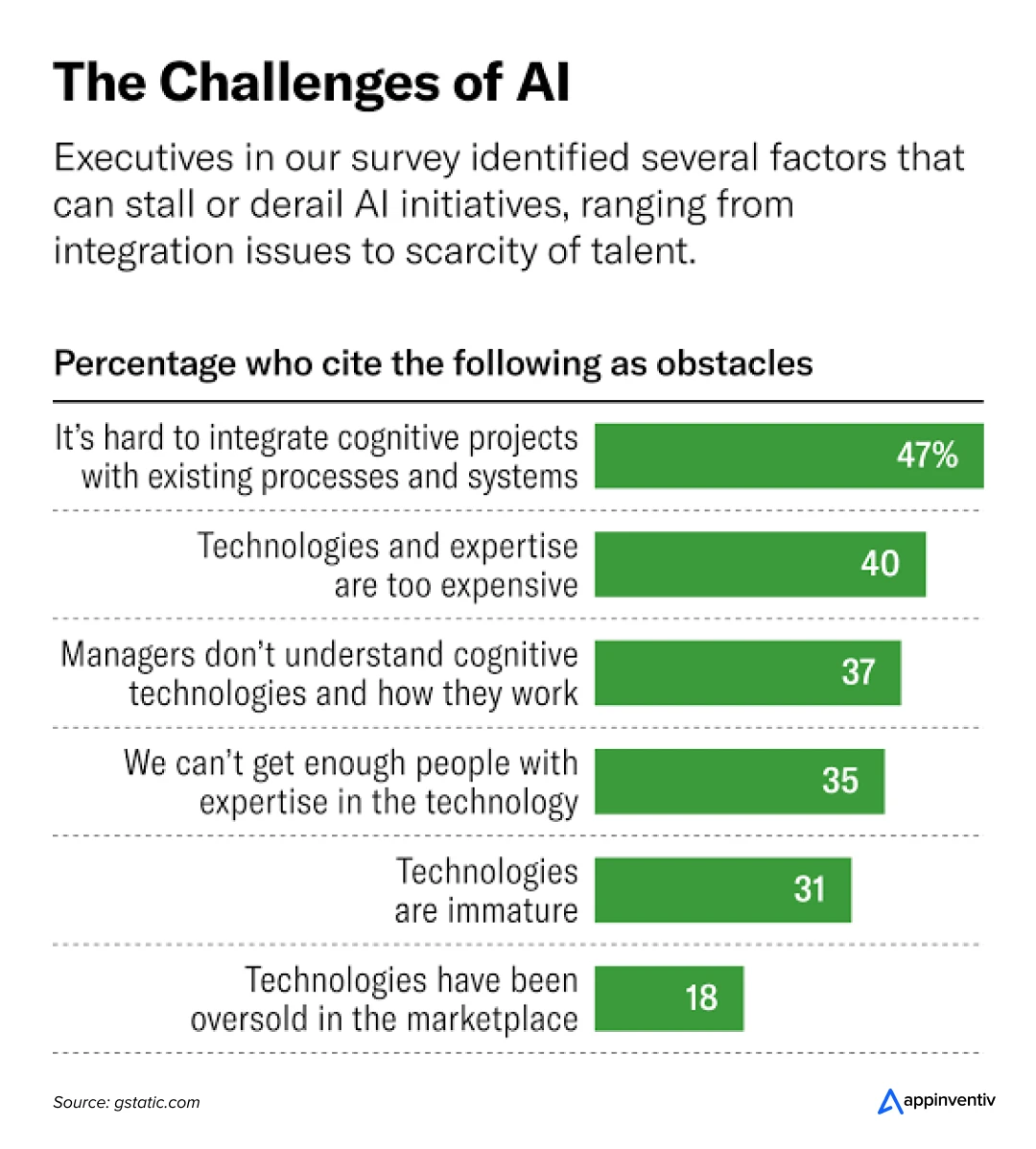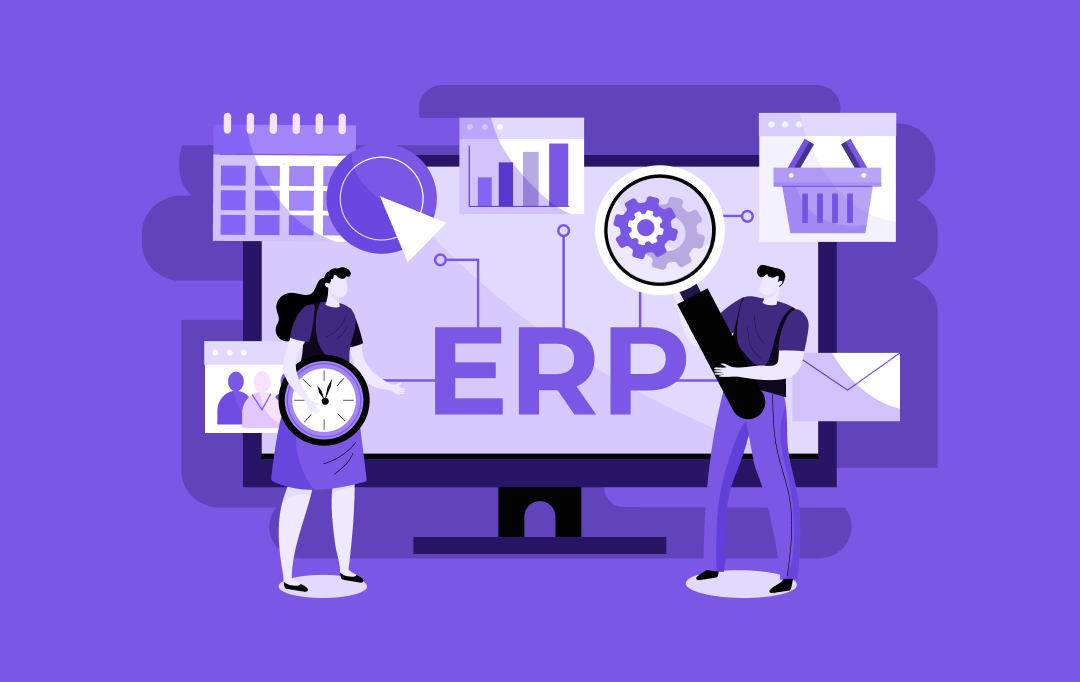AI is no longer a futuristic concept – it’s a business reality. Yet, many companies don’t have a structured approach to adopting it. Instead, they integrate AI based on external pressures because competitors are doing it, because a vendor pitched an enticing solution, or because a department needed a quick fix for a specific problem.
While these efforts might generate short-term efficiency gains, they often lack cohesion. AI remains scattered across different functions, delivering isolated benefits rather than driving real transformation.
The real power of AI doesn’t come from chasing trends or patchwork implementations – it comes from a company-wide strategy that aligns AI with core business objectives. A well-defined AI strategy plan ensures that every investment, from automation tools to advanced analytics, contributes to long-term growth, operational efficiency, and competitive differentiation. It turns AI from a set of disconnected tools into a strategic asset that fuels innovation across the business.

So, how can companies move beyond sporadic AI adoption and build a structured, long-term AI strategy for business? Let’s break it down step by step in this article.
Why Do Companies Struggle to Build an AI Business Strategy?
Despite having one of the finest artificial intelligence business ideas for startups, many companies find creating a structured AI for business strategy difficult. The challenge concerns technology, mindset, leadership, and execution. Here’s why companies tend to get often stuck:
Lack of Clear Business Objectives
Many businesses adopt AI without defining what they want to achieve. They invest in AI-powered tools but don’t tie them to measurable goals – increasing revenue, reducing costs, improving customer experience, or streamlining operations. Without a clear direction, AI adoption for business can end up as isolated experiments rather than strategic growth drivers.
Fragmented AI Efforts Across Departments
AI adoption often starts in silos. The marketing team might use AI for personalized recommendations, customer service may implement chatbots, and operations may automate workflows. While each department benefits individually, the lack of coordination prevents AI from creating a company-wide impact, proving to be one of the biggest challenges to build an AI strategy. Without cross-functional alignment, AI remains underutilized.
Short-Term Thinking Over Long-Term Strategy
Many companies view AI as a quick fix rather than a long-term investment. They implement AI strategies to solve immediate challenges but don’t plan for scalability, integration, or continuous improvement. This reactive approach leads to disjointed solutions that don’t align with the company’s vision.
Skill Gaps and Talent Shortages
AI expertise is in high demand, and companies often struggle to find the right talent. Many businesses either lack in-house AI specialists or rely on external vendors without fully understanding the technology. This knowledge gap makes it difficult to develop a sustainable artificial intelligence strategy and leverage AI to its full potential.
Data Challenges and Infrastructure Limitations
AI thrives on data, but many companies lack the necessary data infrastructure. Issues like data silos, poor data quality, and inadequate data governance prevent AI systems from delivering meaningful insights. Without a strong data foundation, AI initiatives fail to generate real value.
Fear of High Costs and Uncertain ROI
AI investments can be expensive, and many businesses hesitate due to unclear investment returns. Companies struggle to justify AI spending without a well-defined AI implementation strategy, leading to hesitation or half-hearted implementations that don’t yield substantial benefits.
Regulatory and Ethical Concerns
AI has ethical and compliance challenges: data privacy regulations, algorithmic bias, and security risks. Navigating these complexities can be overwhelming, leading some companies to delay AI strategy adoption or avoid it altogether.
Understanding these challenges to build an AI strategy plan is the first step toward overcoming them. The key to success is not just adopting AI but integrating it into a strategic roadmap that aligns with business goals. The next section will explore the fundamental steps to building a strong AI strategy framework.
Steps to Building a Robust AI Business Strategy
Developing a comprehensive artificial intelligence strategy requires more than just choosing the right technology; it involves aligning AI with business objectives, building the right infrastructure, and fostering a culture of innovation. Here’s a step-by-step approach to creating an AI implementation strategy that drives long-term success.

Define Clear Business Objectives
Before investing in AI strategy development, it’s essential to identify the core business challenges or opportunities you want AI to address. Many companies fall into the trap of adopting AI for the sake of innovation rather than solving real problems.
- Ask: What are the biggest inefficiencies in your operations? Where can AI improve customer experience? How can AI unlock new revenue streams?
- Prioritize initiatives aligning with broader business goals, whether reducing costs, increasing efficiency, or driving new product innovations.
- Set measurable KPIs (e.g., reducing customer churn by X%, increasing operational efficiency by Y%). This will help track AI’s impact.
Conduct a Data Audit
AI thrives on data, but poor-quality data can lead to inaccurate insights and unreliable AI models. Conducting a data audit is a highly critical part of the steps for building a successful AI strategy plan, which helps determine:
- What data is available? Identify structured (CRM, ERP, databases) and unstructured data (emails, social media, call logs).
- Is the data clean and accessible? AI models require high-quality, well-organized data. Address missing, duplicate, or outdated records.
- Are there data silos? Different departments often store data in separate systems. A strategy for integrating these datasets is crucial for AI success.
If data gaps exist, consider strategies like data partnerships, third-party integrations, or improved internal data collection mechanisms for seamless integration of AI for business strategy development.
Explore AI Technologies and Their Use Cases
Not all AI solutions are created equal. When building an AI strategy for businesses, executives must explore different AI technologies and determine which ones align best with their needs. Some common AI applications include:
- Machine Learning: Businesses deploy machine learning algorithms for Predictive analytics, recommendation engines, and fraud detection.
- Natural Language Processing: Chatbots, sentiment analysis, voice assistants.
- Computer Vision: Quality inspection, facial recognition, autonomous vehicles.
- Robotic Process Automation: Automating repetitive, rule-based tasks.
When you choose the right AI strategy plan, you should explore how each technology aligns with its business priorities.
Assess Organizational Readiness
AI isn’t just a technology investment; it requires a cultural and operational shift in AI strategy development. Many companies struggle with adoption because they lack the necessary infrastructure, talent, or executive buy-in.
- Technology readiness: Do you have cloud computing for business and software tools required to deploy AI solutions?
- Talent readiness: Do you have AI specialists, data engineers, or partnerships with AI vendors? If not, what’s the plan: hiring, upskilling, or outsourcing?
- Change management: Are employees ready to integrate AI into their workflows? Resistance to change can slow down adoption, so clear communication is key.
Develop an Ethical and Governance Framework
AI strategy framework brings significant ethical and regulatory challenges, including algorithm bias, privacy concerns, and compliance with data protection laws. Businesses must proactively establish the following:
- Ethical AI guidelines: Ensuring AI systems are fair, unbiased, and explainable.
- Data governance policies: Defining how data is collected, stored, and used.
- Compliance with laws: Adhering to GDPR compliance software, CCPA, or industry-specific regulations.
A responsible artificial intelligence strategy minimizes risks and builds trust among stakeholders, including customers, regulators, and employees.
Identify Potential Partners and Vendors
Few companies build AI solutions in-house, relying on strategic partnerships to accelerate AI adoption and reduce costs.
- Cloud providers (AWS, Google Cloud, Microsoft Azure): For AI infrastructure and computing power.
- AI software vendors (IBM Watson, OpenAI, DataRobot): For pre-built AI solutions.
- Consulting firms and AI development agencies: To assist with AI implementation.
Selecting the right partners ensures access to expertise and a ready-to-use AI implementation strategy, reducing the time and resources needed to develop solutions from scratch.
Build a Comprehensive AI Roadmap
A structured roadmap helps ensure AI initiatives don’t remain experimental but translate into long-term business impacts that define the benefits of a successful AI strategy. This includes:
- Data strategy: Defining how data will be collected, processed, and used for AI.
- Algorithm development: Choosing between off-the-shelf AI models or custom-built intelligent AI models.
- Infrastructure setup: Cloud vs. on-premise, storage, and AI computing power.
- Talent plan: Hiring AI specialists vs. outsourcing AI development.
- Implementation timeline: Prioritizing quick wins while planning for long-term AI expansion.
This roadmap of building an AI strategy for businesses is a guiding document that aligns all AI-related initiatives with key short and long-term company goals.
Foster a Culture of AI Learning and Adoption
Even the best well-executed process to develop an AI strategy for business strategy will fail if employees aren’t ready to work with AI. Businesses need to:
- Provide AI training: Help employees understand AI capabilities and limitations.
- Encourage experimentation: Create internal AI labs or test environments.
- Showcase AI success stories: Highlight AI-driven wins to build momentum.
A culture of AI-driven decision-making ensures that AI isn’t just a top-down initiative but is embraced across all levels of the organization.
Establish AI Governance and Compliance Measures
AI systems must be continuously monitored to ensure they operate as intended. Businesses should:
- Set up AI oversight teams: To track AI’s impact and address unintended consequences.
- Regularly audit AI models: To prevent bias, inaccuracies, or performance degradation.
- Ensure compliance with evolving regulations: AI laws are still developing, and businesses must stay updated to avoid legal risks.
A strong governance framework keeps initiatives based on AI and business strategy on track and ensures responsible AI use.
Monitor AI Performance and Continuously Optimize
AI strategies should evolve over time. Once AI solutions are in place, businesses need to:
- Measure AI’s impact: Track performance metrics (e.g., accuracy, efficiency gains, revenue impact).
- Refine AI models: Update algorithms as new data becomes available.
- Expand AI adoption: Identify new areas where AI can drive value.
By continuously iterating, companies ensure AI remains a competitive advantage rather than a one-time investment.
With well-defined steps for building a successful AI strategy, businesses gain a clear roadmap for implementation. However, moving from strategy to execution is where most companies face real challenges. Even with the right plan, unforeseen obstacles can emerge, ranging from data complexities to organizational resistance and high implementation costs.
Successfully integrating AI isn’t just about having a vision; it’s about navigating the roadblocks that come with it. Based on our experience at Appinventiv, we’ve seen businesses struggle with common challenges that slow down or even halt AI adoption. Understanding these hurdles in advance can help organizations proactively address them and ensure a smoother AI transformation. Here’s what to watch out for.
Roadblocks in Creating an AI Business Strategy
AI can potentially transform businesses, but many companies struggle to move beyond isolated use cases to a well-integrated strategy. Challenges often arise not from a lack of ambition but from unclear objectives, fragmented data, talent shortages, and internal resistance. As a result, when you develop an AI strategy for business, it can become expensive experiments that fail to scale or deliver meaningful impact.

We’ve seen these roadblocks firsthand through our work at Appinventiv, an AI consulting services company. Businesses often start with high expectations but encounter hurdles that slow down or derail their AI journey.
However, with the right approach, these challenges can be managed effectively. Here are the most common obstacles we’ve helped businesses overcome when we build AI strategy for business – and the solutions that can set AI initiatives on the path to success.
Lack of a Clear Business Use Case
One of the most common mistakes companies make is adopting AI without a clearly defined purpose. When they plan to build an AI strategy for the business, many executives rush to integrate it because of industry trends or competitor pressure rather than focus on specific problems AI can solve.
Why this is a problem:
- AI projects can become expensive, time-consuming experiments with no measurable ROI.
- AI initiatives may fail to gain executive or employee buy-in without a clear use case.
How to overcome it:
- Start with well-defined business objectives before selecting AI solutions.
- Run pilot projects with clear KPIs to validate AI’s impact before scaling.
Data Challenges: Quality, Availability, and Silos
AI systems are only as good as the data they are trained on. Many companies struggle with:
Why this is a problem:
- Poor data quality: Inconsistent, incomplete, or duplicate data can lead to inaccurate AI outputs.
- Data silos: Departments store data in separate systems, making integration difficult.
- Lack of real-time data: Outdated data leads to delayed insights and inefficient AI models.
How to overcome it:
- Conduct a data audit to assess current data assets and gaps.
- Implement AI TRisM framework to improve data security, standardization, and integration.
- Use AI-driven data cleaning tools to remove inconsistencies and ensure high-quality inputs.
Shortage of AI Talent and Expertise
AI expertise is in high demand, and many businesses struggle to hire or retain skilled professionals. Companies risk mismanaging their AI initiatives without experienced AI engineers, data scientists, and business leaders who understand AI.
Why this is a problem:
- High salaries and competition make AI talent expensive and difficult to acquire.
- A lack of in-house expertise can lead to reliance on external vendors, reducing control over AI development.
How to overcome it:
- Invest in employee training and upskilling programs to build internal AI capabilities.
- Partner with AI vendors or consultants for short-term expertise while building an internal AI team.
- Use low-code/no-code AI platforms that allow non-technical teams to deploy AI solutions.
- Choose the right AI tech slack for your business.
Resistance to Change and Lack of Employee Buy-In
AI often requires significant shifts in business processes, which can lead to resistance from employees, particularly if they fear job displacement. Without proper change management, AI adoption can face internal pushback.
Why this is a problem:
- Employees may resist using AI-driven tools, reducing adoption rates.
- Miscommunication about AI’s role can create uncertainty and fear.
How to overcome it:
- Communicate that AI is meant to augment, not replace, human roles.
- Involve employees in AI discussions early and provide training to help them adapt.
- Share success stories where AI has helped teams improve efficiency and decision-making.
High Implementation Costs and Uncertain ROI
AI development and deployment require significant infrastructure, software, and talent investment. Many businesses struggle to justify these costs without understanding the expected return on investment (ROI).
Why this is a problem:
- AI projects may take months or years before delivering measurable results.
- Unforeseen costs (e.g., computing power, data storage, model retraining) can inflate budgets.
How to overcome it:
- Start with small, cost-effective AI pilots before scaling organization-wide.
- Use cloud-based AI solutions to reduce upfront infrastructure costs.
- Track AI’s financial impact through metrics like revenue growth, efficiency improvements, or cost savings.
Ethical and Regulatory Challenges
AI introduces ethical risks, including bias in decision-making, privacy concerns, and regulatory non-compliance. Governments are also introducing stricter AI-related regulations, making it necessary for businesses to stay compliant.
Why this is a problem:
- AI algorithms can inadvertently reinforce bias if trained on skewed data.
- Data privacy laws (GDPR, CCPA) impose strict requirements on AI-driven data usage.
How to overcome it:
- Implement ethical AI principles focusing on fairness, transparency, and accountability.
- Conduct AI bias audits to detect and correct unintended biases in models.
- Stay updated on AI regulations and ensure compliance with data protection laws.
Difficulty in Scaling AI Solutions
Many companies successfully implement AI in one department but struggle to scale it across the organization. AI projects often remain in the experimental phase, limiting their full impact.
Why this is a problem:
- AI models developed for one use case may not generalize well across different teams.
- Scaling AI requires additional investments in infrastructure, integration, and employee training.
How to overcome it:
- Design AI models with scalability in mind, ensuring they can be adapted for multiple use cases.
- Standardize AI workflows and build AI governance frameworks to guide expansion.
- Foster cross-department collaboration to ensure AI adoption is seamless across different teams.
Unrealistic Expectations and Overhyped Promises
Many businesses expect AI to deliver instant results, only to realize that AI development is an iterative process requiring ongoing refinement.
Why this is a problem:
- Overhyped AI marketing creates unrealistic expectations, leading to disappointment.
- Businesses may abandon AI projects too early if immediate results aren’t visible.
How to overcome it:
- Set realistic timelines and milestones for AI implementation.
- Focus on gradual AI adoption, measuring incremental improvements rather than expecting overnight transformation.
- Educate leadership on AI’s capabilities and limitations to set proper expectations.
Building an AI strategy for business isn’t just about choosing the right technology; it’s about overcoming organizational, financial, and ethical roadblocks that can hinder adoption. Companies proactively addressing these challenges will be better positioned to leverage AI for long-term competitive advantage.
Successfully navigating the challenges of AI adoption is just the first step. Once your strategy is in place and you’ve started integrating AI, the next critical phase is to measure its impact. Without proper metrics, it’s difficult to understand if your AI initiatives are truly delivering value or if adjustments are needed. This is where KPIs come into play.
Measuring success is not just about tracking isolated data points; it’s about continuously assessing whether AI drives the intended business outcomes and delivers a solid return on investment. By establishing the right KPIs, you’ll be able to track progress, identify areas for improvement, and refine your strategy for ongoing success.
How Can Appinventiv Help You Build an AI Business Strategy
Appinventiv, as a leading AI development company, has a proven track record of helping businesses across industries with seamless AI adoption. With a team of 1600+ tech experts and a proven track record of delivering successful AI systems for global brands like Mudra, Vyrb, JobGet, and Gurushala, we specialize in crafting AI strategies that drive measurable outcomes.
Our team works closely with emerging startups and leading enterprises to identify high-value AI use cases, build scalable models, and integrate them seamlessly into existing ecosystems. Whether you aim to enhance customer experiences, optimize operations, or unlock new revenue streams, our AI consulting services help define AI’s role in achieving those outcomes.
How do we do it?
- We simplify the complex process of building an AI strategy for business by aligning the tech’s initiatives with your core business goals.
- We start by understanding your unique challenges, objectives, and pain points, ensuring that AI becomes a strategic asset that drives measurable growth.
- Our team conducts a thorough audit of your existing data, systems, and infrastructure to ensure that AI applications are built on a solid foundation.
- We help you select the right AI technologies and tools – whether machine learning, predictive analytics, or natural language processing – to meet your specific needs.
- Beyond implementation, we focus on upskilling your team, providing the training necessary to foster AI fluency within your organization for long-term success.
- We also prioritize ethical considerations in every step of the process, ensuring that data privacy and transparent decision-making are upheld.
- What’s more? With continuous support and a flexible, adaptive strategy, we help you navigate the evolving AI landscape, ensuring your business stays ahead of the curve.
Ready to build your AI business strategy? Contact us today to transform your vision into actionable results.
FAQs.
Q. What is AI Strategy?
A. An AI strategy framework is a comprehensive plan that outlines how a business will use artificial intelligence technologies to achieve its goals and drive growth. This strategy involves understanding the business’s objectives, selecting the appropriate AI tools and technologies, and ensuring the organization can leverage AI effectively across all relevant departments. The AI strategy for business also focuses on developing the right infrastructure, ensuring ethical practices, and setting clear performance metrics to measure success.
Q. How to Build an Artificial Intelligence Strategy for Business?
A. The answer to how to develop an artificial intelligence strategy involves several key steps:
- Define Business Objectives: Understand the company’s goals and identify how AI can help achieve them, such as improving efficiency, enhancing customer experience, or increasing revenue if the first step of answering how to create an AI strategy for a company.
- Conduct a Data Audit: Ensure your company’s data is clean, accessible, and ready for AI processing.
- Select the Right Technologies: Choose AI tools and technologies that align with your business objectives and resources.
- Develop an Ethical Framework: Establish guidelines to ensure your business uses AI responsibly and ethically.
- Create a Roadmap: Develop a clear plan for implementation, including the necessary resources, timelines, and milestones.
- Train Employees: Equip your workforce with the skills and knowledge to support and benefit from AI integration.
- Monitor and Measure Performance: Set up KPIs to assess the success of your AI initiatives and make adjustments as needed.
Q. What is the First Step in the Process of AI Strategy Building?
A. The first step in building an AI strategy for business is to define clear business objectives. It’s essential to understand the specific challenges you want AI to address and how it can contribute to the broader goals of your business. Without this foundation, AI initiatives may lack direction and fail to deliver measurable outcomes. Once you have clarity on business goals, the next steps, like conducting a data audit, selecting AI technologies, and developing an implementation plan, become much more targeted and impactful.
Q. How to Measure the Success of Your AI Business Strategy?
A. Measuring the success of your AI strategy is crucial to ensure it’s providing real value to your business. While traditional KPIs might focus on simple metrics like revenue or customer acquisition, AI’s impact often extends across various departments and operations, making evaluating it more complex. The key is to align your AI metrics with the overall objectives of your business, ensuring that every success factor directly ties back to your company’s larger vision.
A good starting point is to track how AI strategy for business helps meet company objectives. Whether you want to drive revenue growth, cut operational costs, or improve customer experience, your AI performance indicators should reflect these goals.
For instance, if revenue growth is a priority, you can assess how AI has unlocked new revenue streams or optimized sales channels. On the other hand, if cost reduction is a target, evaluating AI’s role in improving efficiency and cutting down operational expenses will give you a clear picture of its ROI.
Product Development & Engineering
IT Managed & Outsourcing
Consulting Services
Data Services
Didn't find what you're looking for? Let us know your needs, and we'll tailor a solution just for you.






























